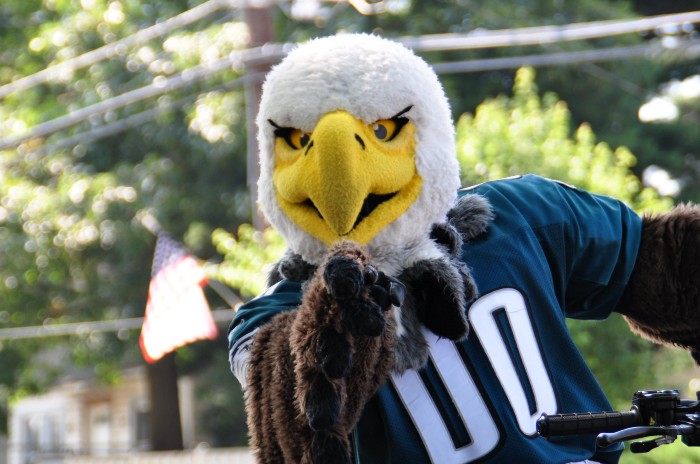Miles Sanders Vs Jordan Howard
The Debate of 2019
“With the 53rd pick in the 2019 NFL Draft, the Philadelphia Eagles select Miles Sanders running back Penn State.” From then on, it was evident that Sanders was the back of the future. However, the Eagles also traded for Jordan Howard, an experienced, boulder, lower your shoulder type of RB. So, is Sanders the back of the 2019 Philadelphia Eagles?

The Case for Miles Sanders
Sanders is your prototypical modern NFL running back. He has everything it takes to have a decade-plus career in this league. He’s agile, an excellent route runner, and above all is a reliable pass blocker. His agility allows him to get on the outside with ease, but a theme with him is that his strengths lead to his weaknesses. Similar to another Penn State running back Saquon Barkley, he bounces outside when the risk outweighs the costs. The confidence he has in his home run threat ability clouds his vision at times. Instead of sticking his foot in the dirt and using his movement to carry people forward, he tries to find holes where they are not visible. Although he is not the bulkiest RB (221 lbs), his speed should allow him to be a physical force occasionally. These shortcomings are the reason Sanders averaged 2.76 yards a carry entering week 4.
Moreover, Sanders’s most prominent weakness, going back into his college days, is his ball security. Sanders’s habit of being loose with the pigskins lead to ten fumbles in his Penn State days, even though he rode the bench as Saquan’s back up his initial two seasons, and two in his first four games a professional. One lead to a field goal by the Lions, which proved to be crucial as the Eagles dropped that game 27–24. Despite his deficiencies, Miles Sanders has an immense variety of skills that even most seasoned veterans lack, his ability to affect all three phases of the offense-blocking, pass-catching, and running- is too valuable to be underutilized.
The Case for Jordan Howard
Jordan Howard, on the other hand, is more of an old school running back. His grind it out blue-collar mentality forms an exceptional one-two punch with Sanders. He is the definition of consistency. In fact, discounting 2018, where Matt Nagy wanted to incorporate Tarik Cohen more into the offense, Howard has never averaged less than four yards a carry (career average 4.3 yards per attempt). What allows him to be consistent? His patients, his strength (230 lbs and BMI 31.2), and his most compelling attribute his vision will enable him to break down defenses, physically and morally. A common myth about Howard is that he cannot be a bail-out RB1 for a quality NFL team. However, when he was asked to be that, his first two seasons he produced two thousand-yard seasons and as a rookie was the runner up for the rushing title. It is understandable to be skeptical about Howard’s early success because John Fox was the head coach at the time; he was unquestionably more defensive-minded. However, the fact that he was trusted by John Fox as a rookie speaks to his intelligence and attitude on the field. He’s simply a baller.
As for his weakness, there are two major ones, his explosiveness, and his pass-catching ability. The explosiveness is understandable; Howard is a boulder; he is going to run in between the tackles and ram through people (92.3% of his yards are after initial contact). He has to give up speed for power. His pass-catching, nevertheless, is impossible to disregard. In a Doug Pederson offense, the running back has to be able to run precise routes and break down defenders in space. This is why Darren Sproles, at 36, plays a vital role in this offense. During his 2018 season, Howard averaged 6.4 yards after the reception, but his yards above replacement were -4. Therefore, there were yards to have that he did not exploit. Overall, although the passing woes are significant, the consistency and veteran presence Howard brings to this football team outweigh his issues.
Who is the top running back for the Eagles?
In the NFL, physicality and experience matter. Howard’s reliability to regularly churn out positive yards and push piles to move the chains should be valued more by Doug Pederson, Duce Staley, and this Eagles offense. Moreover, Sanders merely lacks the in-game reps to hand him the rock consistently. In time, Sanders’ number will be called upon. He’s too talented not to pan-out. As for this season, Sanders will still have a prominent role as the change-up back, occasionally split time with Sproles on third down, and should be the primary kick-off returner even after Corey Clement returns.
Statistics Provided By:
Pro Football Reference, Player Profile, Football Outsiders, and Team Rankings
Follow us on Twitter @flyphillyfly2
Featured photo from Lee Lilly